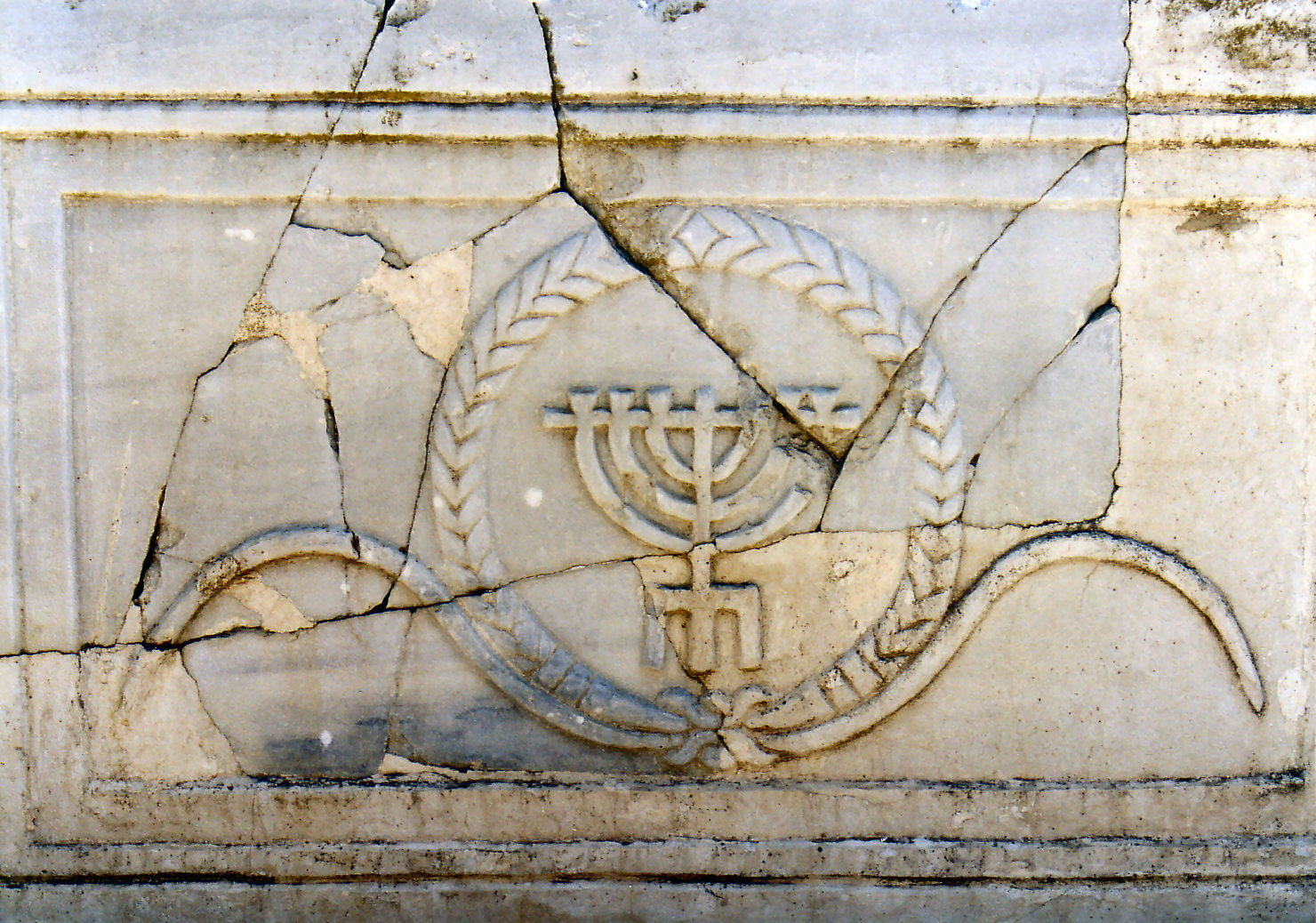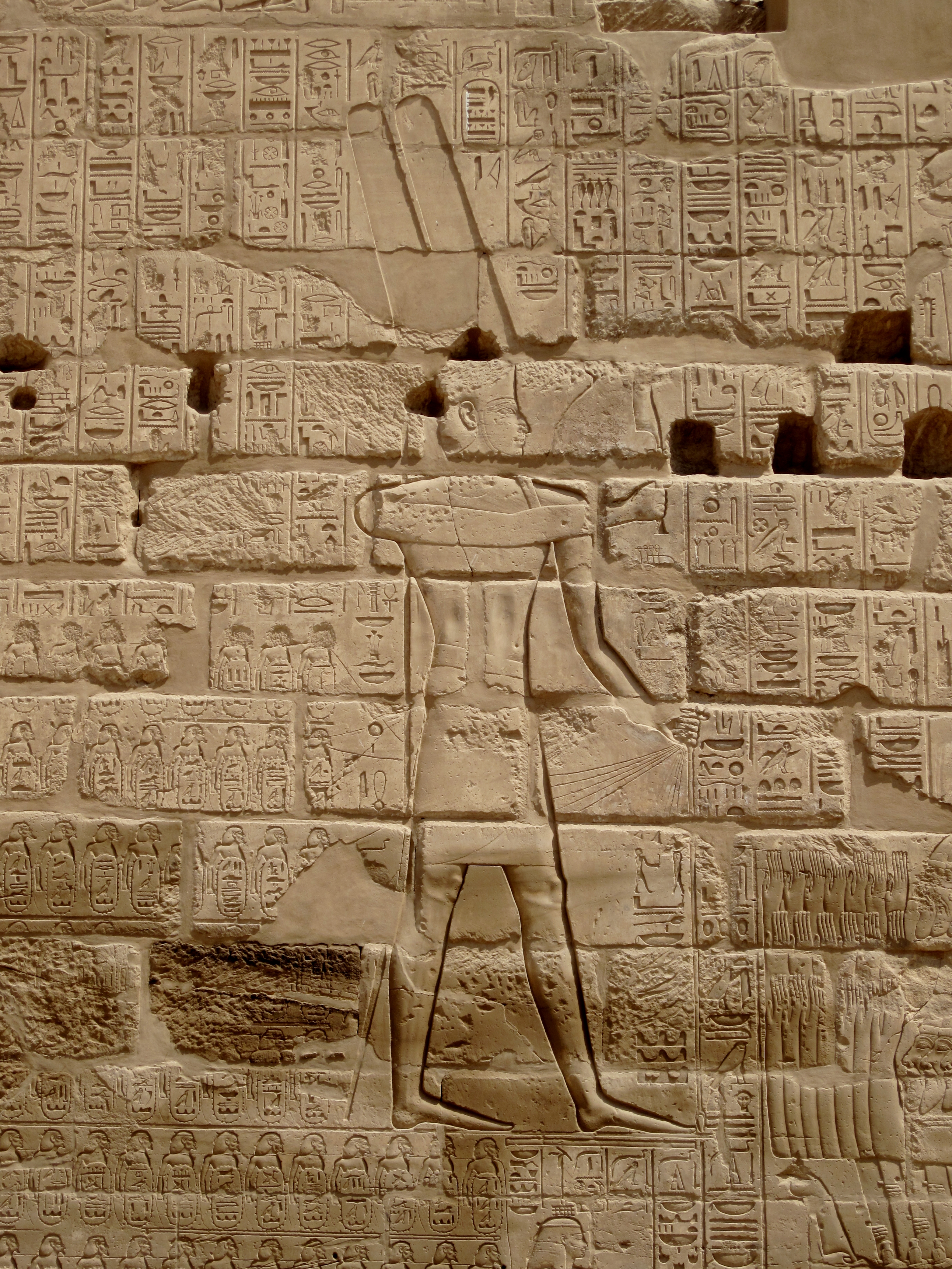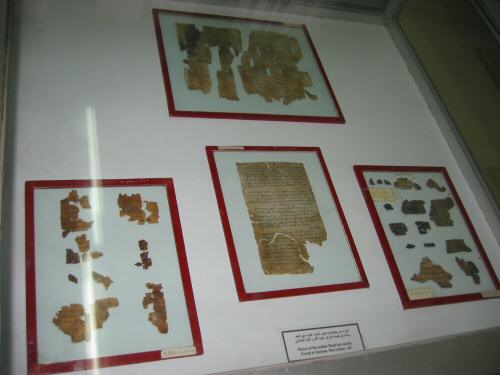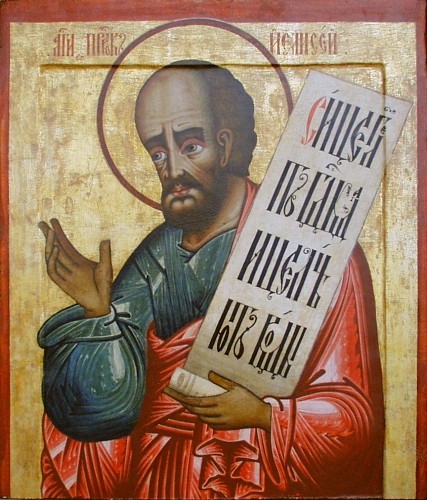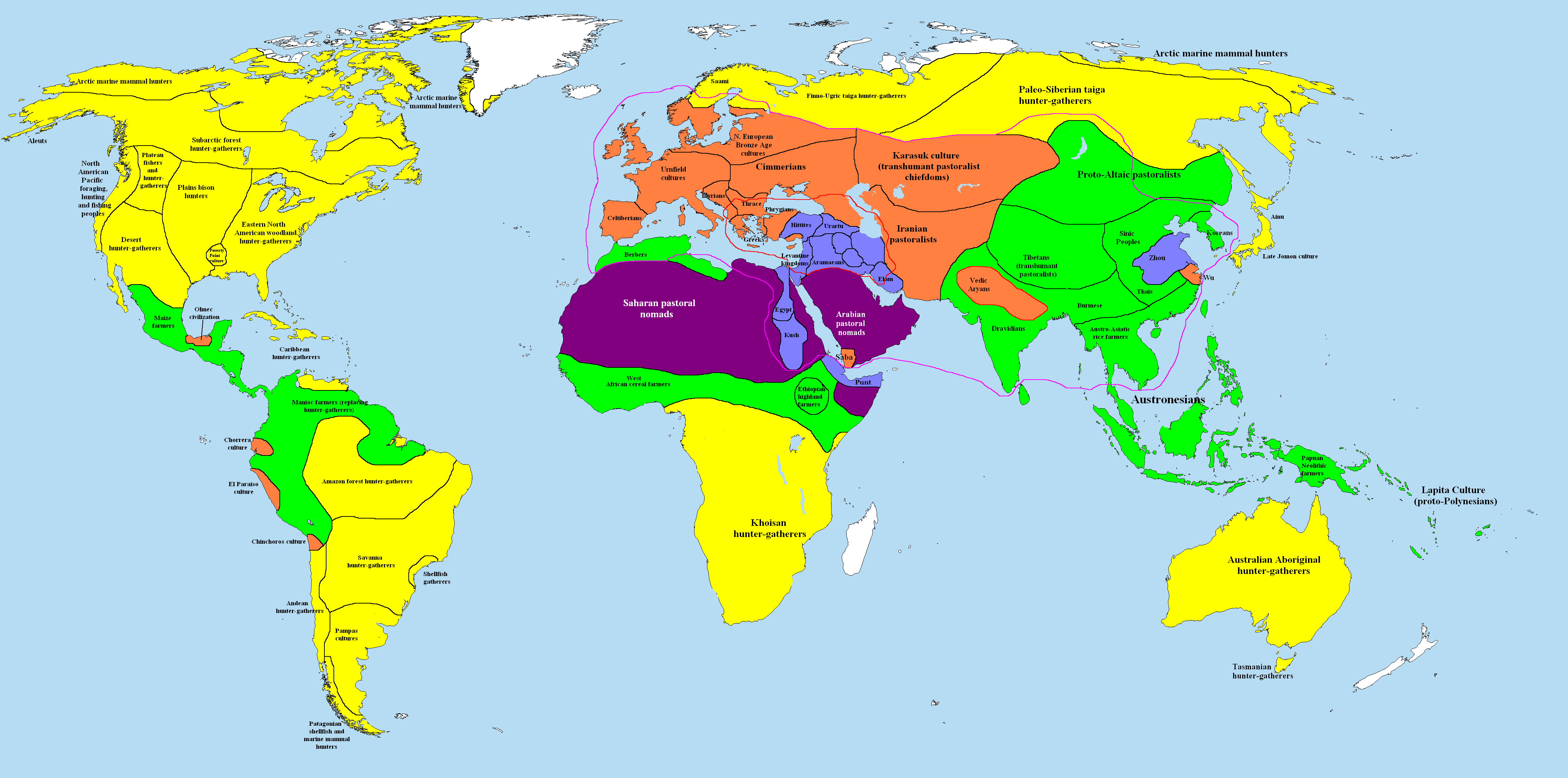|
Tel Rehov
Tel Rehov ( he, תל רחוב) or Tell es-Sarem ( ar, تل الصارم), is an archaeological site in the Bet She'an Valley, a segment of the Jordan Valley, Israel, approximately south of Beit She'an and west of the Jordan River. It was occupied in the Bronze Age and Iron Age. The site is one of several suggested as Rehov (also Rehob), meaning "broad", "wide place", The oldest apiary discovered anywhere by archaeologists, including man-made beehives and remains of the bees themselves, dating between the mid-10th century BCE and the early 9th century BCE, came to light on the tell. In the nearby ruins of the mainly Byzantine-period successor of Iron Age Rehov, a Jewish town named Rohob or Roōb, archaeologists discovered the longest mosaic inscription found so far in the Land of Israel. Identification Tel Rehov does not correspond to the Hebrew Bible places named as Rehov, of which two were in the more westerly allotment of the Tribe of Asher, and one more northerly. [...More Info...] [...Related Items...] OR: [Wikipedia] [Google] [Baidu] |
Mosaic Of Rehob
The Mosaic of Reḥob, also known as the Tel Rehov inscription and Baraita of the Boundaries, is a late 3rd–6th century CE mosaic discovered in 1973, inlaid in the floor of the foyer or narthex of an ancient synagogue near Tel Rehov, south of Beit She'an and about west of the Jordan River, containing the longest written text hitherto discovered in any mosaic in the Land of Israel, and also the oldest known Talmudic text. Unlike other mosaics found in the region, the Reḥob mosaic has very little in the form of ornate design and symmetric patterns, but is unique due to its inscription, acclaimed by scholars to be one of the most important epigraphical findings discovered in Israel in the last century. Its text sheds invaluable light on the historical geography (toponymy) of Palestine during the Late Roman and Byzantine periods, as well as on Jewish and non-Jewish ethnographic divisions in Palestine for the same periods and their relation to one another, specifically, on agric ... [...More Info...] [...Related Items...] OR: [Wikipedia] [Google] [Baidu] |
Bubastite Portal
The Bubastite Portal gate is located in Karnak, within the Precinct of Amun-Re temple complex, between the temple of Ramesses III and the second pylon. It records the conquests and military campaigns in c.925 BC of Shoshenq I, of the Twenty-second Dynasty. Shoshenq has been identified with the biblical Shishaq, such that the relief is also known as the Shishak Inscription or Shishaq Relief. History This gate was erected by the kings of the Twenty-second Dynasty of Egypt, also known as the "Bubastite Dynasty". It is located to the south-east side of the Temple of Ramesses III. Although Karnak had been known to Europeans since the end of the Middle Ages, the possible significance of the Bubastite Portal was not apparent prior to the decipherment of hieroglyphs. Jean-François Champollion visited Karnak in 1828, six years after his publication of the Rosetta Stone translation. In his letters he wrote: Description One facade shows King Sheshonq I, Teklot and Osorkon of the 22n ... [...More Info...] [...Related Items...] OR: [Wikipedia] [Google] [Baidu] |
Jehu
) as depicted on the Black Obelisk of Shalmaneser III , succession = King of Northern Israel , reign = c. 841–814 BCE , coronation = Ramoth-Gilead, Israel , birth_date = c. 882 BCE , death_date = c. 814 BCE , burial_place = Samaria, Kingdom of Israel , predecessor = Jehoram , successor = Jehoahaz , issue = Jehoahaz , father = Jehoshaphat Jehu ( he, יֵהוּא, translit=Yēhūʾ, meaning "Yahu is He"; akk, 𒅀𒌑𒀀 ''Ya'úa'' 'ia-ú-a'' la, Iehu) was the tenth king of the northern Kingdom of Israel since Jeroboam I, noted for exterminating the house of Ahab. He was the son of Jehoshaphat, grandson of Nimshi, and possibly great-grandson of Omri, although the latter notion is not supported by the biblical text. His reign lasted for 28 years. William F. Albright has dated his reign to 842–815 BCE, while E. R. Thiele offers the dates 841–814 BCE. The principal source for the events of his reign comes from 2 Kings. Biblical ... [...More Info...] [...Related Items...] OR: [Wikipedia] [Google] [Baidu] |
Nimshi
Nimshi ( he, נִמְשִׁי ''Nīmšī''; Latin and Douay–Rheims: Namsi) is a character in the Hebrew Bible. He is mentioned in the Books of Kings and the Second Book of Chronicles as father, grandfather, or possibly a forebear of Jehu, the king of the Northern Kingdom of Israel (compare with ). History The Hebrew word ''ben'' () can mean both a literal "son", or a male descendant. The biblical text describes Jehu as either the "son of Nimshi" (''ben Nimshi''); or as the "son of Jehoshaphat" (''ben Yehoshafat''), who is himself called the "son of Nimshi". Some scholars have therefore taken the phrase to mean that Jehu was not the actual son of Nimshi, and that Nimshi was either the grandfather or ancestor of Jehu, or even that Jehu belonged to a ''clan'' named Nimshi. Another possibility is that "son of Jehoshaphat" was a later addition, in which case Nimshi would be the father of Jehu. Baruchi-Unna suggests that Nimshi was a son of King Omri and a brother of King Ahab. Jehu ... [...More Info...] [...Related Items...] OR: [Wikipedia] [Google] [Baidu] |
Altar
An altar is a table or platform for the presentation of religious offerings, for sacrifices, or for other ritualistic purposes. Altars are found at shrines, temples, churches, and other places of worship. They are used particularly in paganism, Christianity, Buddhism, Hinduism, Judaism, modern paganism, and in certain Islamic communities around Caucasia and Asia Minor. Many historical-medieval faiths also made use of them, including the Roman, Greek, and Norse religions. Etymology The modern English word '' altar'' was derived from Middle English '' altar'', from Old English '' alter'', taken from Latin '' altare'' ("altar"), probably related to '' adolere'' ("burn"); thus "burning place", influenced by '' altus'' ("high"). It displaced the native Old English word '' wēofod''. Altars in antiquity File:Tel Be'er Sheva Altar 2007041.JPG, Horned altar at Tel Be'er Sheva, Israel. File:3217 - Athens - Sto… of Attalus Museum - Kylix - Photo by Giovanni Dall'Orto, ... [...More Info...] [...Related Items...] OR: [Wikipedia] [Google] [Baidu] |
Incense
Incense is aromatic biotic material that releases fragrant smoke when burnt. The term is used for either the material or the aroma. Incense is used for aesthetic reasons, religious worship, aromatherapy, meditation, and ceremony. It may also be used as a simple deodorant or insect repellent. Incense is composed of aromatic plant materials, often combined with essential oils. The forms taken by incense differ with the underlying culture, and have changed with advances in technology and increasing number of uses. Incense can generally be separated into two main types: "indirect-burning" and "direct-burning". Indirect-burning incense (or "non-combustible incense") is not capable of burning on its own, and requires a separate heat source. Direct-burning incense (or "combustible incense") is lit directly by a flame and then fanned or blown out, leaving a glowing ember that smoulders and releases a smoky fragrance. Direct-burning incense is either a paste formed around a bamboo stic ... [...More Info...] [...Related Items...] OR: [Wikipedia] [Google] [Baidu] |
Abel-meholah
Abel-meholah ( he, אָבֵל מְחוֹלָה, ''Avel Mehola'') was an ancient city frequently mentioned in the Hebrew Bible (Old Testament of Christianity). It is best known for being the birthplace and residence of the prophet Elisha. It is traditionally located near the Jordan River, south of Beit-She'an. Mentions in the Bible When Gideon defeated the Midianites, some of them fled "as far as the border of Abel-meholah" (). The text indicates that Abel-meholah was seen as a region with a defined border, west of the Jordan River and south of Beit-She'an. Abel-meholah is mentioned the Book of Kings under the description of King Solomon's administration. Among Solomon's twelve governors, there is one Baana who is put in charge of several districts including the area "from Beth-She'an to Abel-meholah" (). Later in the Book of Kings, Elijah, who had fled fearing Queen Jezebel's wrath, is ordered by God at Mount Horeb to go back along the Jordan valley and "anoint Elisha son of Sh ... [...More Info...] [...Related Items...] OR: [Wikipedia] [Google] [Baidu] |
Biblical Archaeology Society
The Biblical Archaeology Society was established in 1974 by American lawyer Hershel Shanks, as a non-sectarian organisation that supports and promotes biblical archaeology. Its current publications include the ''Biblical Archaeology Review'', whilst previously circulating the ''Bible Review'' (1985–2005) and ''Archaeology Odyssey'' (1998–2006). The Biblical Archaeology Society also publishes books about biblical archaeology aimed at a general readership. The Society has, for more than 30 years, run seminars and tours offering an opportunity to learn directly from world-renowned archaeologists and scholars. It also produces videos (DVD) and CDs on archaeology and biblical archaeology. The Biblical Archaeology Society has gained global traction, not only through its popular publication '' The Biblical Archaeology Review,'' yet through its involvement in multiple authenticity scandals. History The Biblical Archaeology society was founded by lawyer, turned amateur archaeologist, ... [...More Info...] [...Related Items...] OR: [Wikipedia] [Google] [Baidu] |
Elisha
Elisha ( ; or "God is my salvation", Greek: , ''Elis îos'' or , ''Elisaié,'' Latin: ''Eliseus'') was, according to the Hebrew Bible, a prophet and a wonder-worker. His name is commonly transliterated into English as Elisha via Hebrew, Eliseus via Greek and Latin, or Alyasa via Arabic, and Elyasa or Elyesa via Turkish. Also mentioned in the New Testament and the Quran, Elisha is venerated as a prophet in Judaism, Christianity and Islam and writings of the Baháʼí Faith refer to him by name. Before he settled in Samaria, Elisha passed some time on Mount Carmel. He served from 892 until 832 BC as an advisor to the third through the eighth kings of Judah, holding the office of "prophet in Israel". He is called a patriot because of his help to soldiers and kings. In the biblical narrative, he is a disciple and protégé of Elijah, and after Elijah was taken up in a whirlwind, Elisha received a double portion of his power and he was accepted as the leader of the sons of th ... [...More Info...] [...Related Items...] OR: [Wikipedia] [Google] [Baidu] |
Ostracon
An ostracon (Greek: ''ostrakon'', plural ''ostraka'') is a piece of pottery, usually broken off from a vase or other earthenware vessel. In an archaeological or epigraphical context, ''ostraca'' refer to sherds or even small pieces of stone that have writing scratched into them. Usually these are considered to have been broken off before the writing was added; ancient people used the cheap, plentiful and durable broken pieces of pottery around them as convenient places to place writing for a wide variety of purposes, mostly very short inscriptions, but in some cases very long. Ostracism In Classical Athens, when the decision at hand was to banish or exile a certain member of society, citizen peers would cast their vote by writing the name of the person on the shard of pottery; the vote was counted and, if unfavorable, the person was exiled for a period of ten years from the city, thus giving rise to the term ''ostracism''. Broken pottery shards were also used for anal hygi ... [...More Info...] [...Related Items...] OR: [Wikipedia] [Google] [Baidu] |
Sherd
In archaeology, a sherd, or more precisely, potsherd, is commonly a historic or prehistoric fragment of pottery, although the term is occasionally used to refer to fragments of stone and glass vessels, as well. Occasionally, a piece of broken pottery may be referred to as a shard. While the spelling shard is generally reserved for referring to fragments of glass vessels, the term does not exclude pottery fragments. The etymology is connected with the idea of breakage, from Old English ''sceard'', related to Old Norse ''skarð'', "notch", and Middle High German ''schart'', "notch". A sherd or potsherd that has been used by having writing painted or inscribed on it can be more precisely referred to as an ostracon An ostracon (Greek: ''ostrakon'', plural ''ostraka'') is a piece of pottery, usually broken off from a vase or other earthenware vessel. In an archaeological or epigraphical context, ''ostraca'' refer to sherds or even small pieces of ston .... The analysis of ... [...More Info...] [...Related Items...] OR: [Wikipedia] [Google] [Baidu] |
10th Century BC
The 10th century BC comprises the years from 1000 BC to 901 BC. This period followed the Late Bronze Age collapse in the Near East, and the century saw the Early Iron Age take hold there. The Greek Dark Ages which had come about in 1200 BC continued. The Neo-Assyrian Empire is established towards the end of the 10th century BC. In the Iron Age in India, the Vedic period is ongoing. In China, the Zhou dynasty is in power. Bronze Age Europe continued with Urnfield culture. Japan was inhabited by an evolving hunter-gatherer society during the Jōmon period. The world in the 10th century BC Events * 1000 BC: India— Iron Age of India. Indian kingdoms rule India— Panchala, Kuru, Kosala, Pandya kingdom and Videha * 1000 BC: The Sa Huỳnh culture started in central and southern Vietnam. * 993 BC: Amenemope succeeds Psusennes I as king of Egypt. * 993 BC: Archippus, King of Athens dies after a reign of 19 years and is succeeded by his son Thersippus. * 984 BC: Osorkon th ... [...More Info...] [...Related Items...] OR: [Wikipedia] [Google] [Baidu] |
